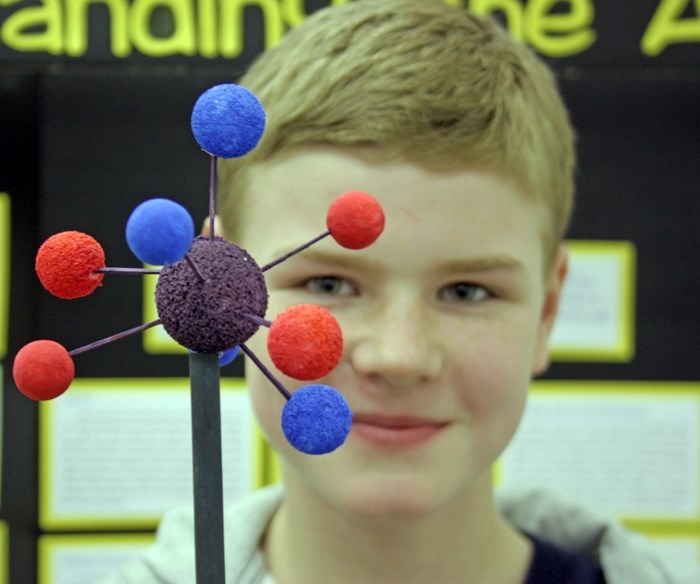Several dozen students qualified to advance to the Edmonton Regional Science fair after earning awards for a variety of projects at the Westlock Local Science Fair last Tuesday.
The projects came from students in Grades 1 to 8 and from schools across the Pembina Hills school division, as well as St. Mary School.
Sue Chapotelle, one of the organizers of the event, said she was happy with the turnout, and added the quality of the projects she sees continues to improve year after year.
Part of the reason for this, she added, could be that students can see the projects done in previous years and try to improve on them.
“I think it’s absolutely fantastic to see what they’ve learned through science,” she said.
Students had projects in a wide range of categories: biological science, chemical science, environmental science, medical science and physical science.
Projects ranged from relatively straightforward topics to more complex ones depending on the age group.
One of the older students, Aaron Friesen, did a project entitled “Nuclear Energy — Understanding the Atom.”
He said he appreciated the process of researching and putting the data together, and learned a great deal from it.
“I learned a lot about nuclear energy. Before I started I didn’t really know what it was about,” he said.
Furthermore, the knowledge he gained from his project has helped him to form his opinion about nuclear energy, which is a controversial social issue.
“I think it’s an excellent source of energy,” he said.
Natalie Zdrodowski, another junior high school student, did her project on lungs — specifically, how lung capacity affects people.
She said going through the process of gathering data by measuring and comparing the lung capacity of several individuals helped her to develop a greater understanding of the organ. It is along a similar theme as projects she has done in previous years.
“I actually want to do something in the medical field. I’ve done the heart, I’ve done hearing, and lungs are important for every single person,” she said. “I might want to be a doctor, so this is a little bit related.”
There have been some substantial notable successes in previous years; most recently, Kyle Schole went on to compete at the Edmonton Regional Science Fair and won at the national level.
Ultimately, however, Chapotelle said she sees the benefits of doing science projects going far beyond the classroom and entering into practical applications for everyday life. “I’m still always trying four different kinds of laundry detergent or different kinds of seeds to see what works best,” she said. “That’s what these kids are learning.”



